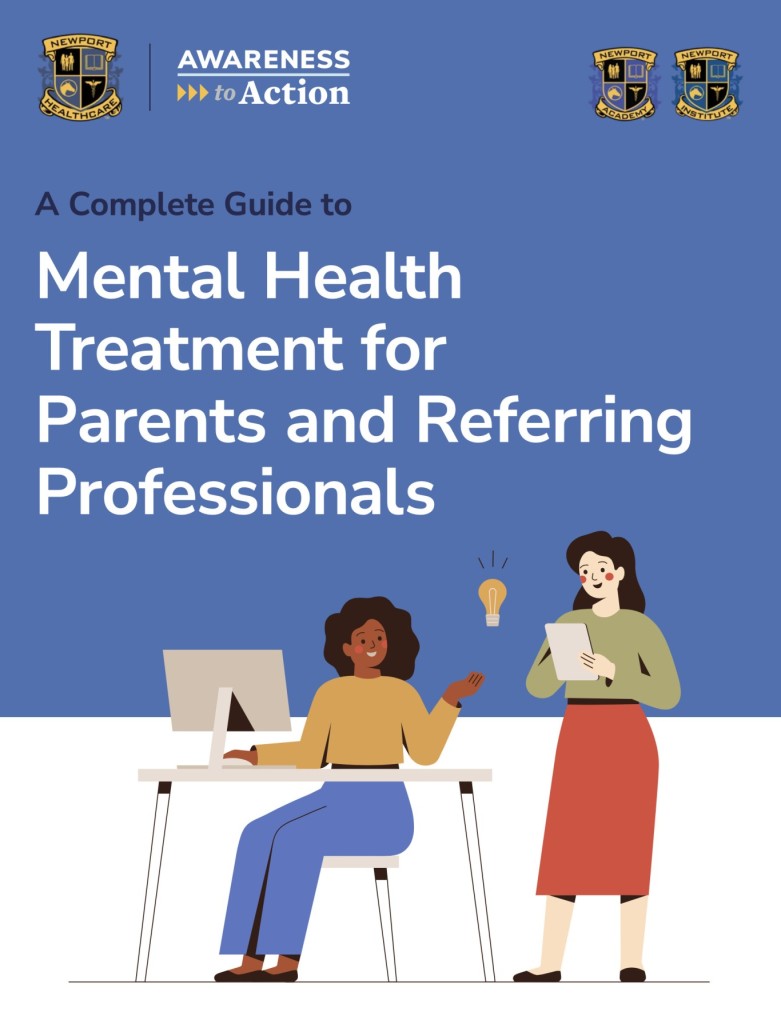In a time when so many young people are suffering, it feels wrong to talk about “silver linings.” But if there is anything positive that has resulted from the youth mental health crisis, it is increased awareness around mental health symptoms and conditions.
Individuals, families, and communities have had to confront the fact that everything is not okay. Collectively, we have been forced to acknowledge what our children, teens, and young adults are experiencing, and try to understand why they are in so much pain. Our researchers have studied the impact of the pandemic, and looked beyond it to quantify the loneliness, isolation, and despair that our young people were feeling long before 2020.
As a society, we are finally reducing the stigma around mental health—because we can no longer ignore what so many of us are feeling. Athletes, actors, musicians, and other celebrities, from Simone Biles to Demi Lovato to Prince Harry, have spoken out about their struggles. The US Surgeon General released an urgent advisory on youth mental health in late 2021. Mental health has permeated our culture and become one of the most talked-about topics on social media, in schools, and in the news. Particularly for adolescents—who tend to build trust and connection through action and activity as much as conversation—there are significant advantages to in-person care.
Do you have clients who struggle to understand the treatment landscape? Despite growing awareness around mental health, the process of accessing care can be confusing for individuals and families—and sometimes for providers as well.
To fill that gap, we’ve created a treatment toolkit that you can share with your clients and colleagues, covering topics including:
⦁ The different levels of care
⦁ The role insurance plays
⦁ How to identify the best program
⦁ What all the acronyms mean!
Awareness is the first step. Taking action saves lives.
Understanding and acknowledging mental health issues and the importance of self-care is an essential step. But it’s not the ultimate goal. With 25 percent of teens suffering from depression, 40 percent struggling with anxiety, and half of all young adults in distress, we cannot afford to stop at awareness. We must find ways to take the next steps so that young people can receive the treatment they need.
Despite increased education and decreased stigma, 60 percent of youth with major depression don’t receive any mental health services at all. Among young adults, cost is the primary obstacle to accessing care, followed by not knowing where to go to find help.
What comes next?
Clearly, more education is needed—not just around symptoms and self-care, but around treatment itself: the different levels of care, the role insurance plays in accessing care, and how to distinguish high-quality treatment from programs that are unlicensed and unsafe. We need to help young people and families understand what they will experience in treatment, so it’s no longer a source of fear and confusion.
In addition, the mental healthcare industry needs to commit to rigorous research around treatment methodology and outcomes, and publicize those findings so that treatment for mental health is viewed in the same light as other evidence-based forms of healthcare.
And, individually and together, we must examine what stops us from seeking care and work to overcome those barriers. It is, quite literally, a matter of life and death.
5 Pillars to Support the Shift from Awareness to Action
There are five avenues through which the mental healthcare industry can provide the information and assurance that individuals and families need in order to move from awareness to action in protecting youth mental health:
Researching outcomes
Robust research on the efficacy of treatment will help drive home the understanding that taking care of our own and our family’s mental health is no different than seeking scientifically validated care for other health issues. Families are rarely conflicted about getting diagnoses and treatment if their child is suffering from cancer or diabetes. Yet more teenagers and young adults die from suicide than from cancer, heart disease, diabetes, pneumonia, the flu, and chronic lung disease combined.
Prioritizing thought leadership
Individuals and families should be able to see the faces of providers, learn about their background and education, and read their reflections on the industry and their work. Potential clients need to know who will be taking care of them or their child, why they care about this work, and the values they uphold.
Creating transparency around the treatment experience
As a result of the centuries-old stigma around mental healthcare, the reality of what treatment looks like has historically been hidden and mysterious. We must change this. Families need to know how their child will be cared for. Young adults need to understand what they will experience. They need to hear testimonials from alumni and parents who have taken action and been moved to share their stories of healing.
Publicizing accreditations and affiliations
Who a company or provider partners with says volumes about who they are. Approval from respected accreditation bodies and partnerships with leading national organizations are testaments to the quality, safety, integrity, and trustworthiness of the care that will be provided.
Increasing clarity around financial options
As recently as 20 years ago, clients were forced to pay out of pocket for mental health and substance abuse treatment. Today, most major insurance payers cover outpatient and residential treatment programs, and they are much more willing to provide coverage when they know a program offers safe, effective, and clinically driven treatment. Moreover, young adults can stay on their parents’ healthcare plan until age 26, meaning that their mental healthcare is also covered.
How can we help?
Newport Healthcare is dedicated to helping families, young adults, providers, school professionals, and others who work with young people to move from awareness to action. We see you and we are here for you.
Please reach out to us today to explore how we can serve as a resource for you, your family, or the young people and families you serve.

